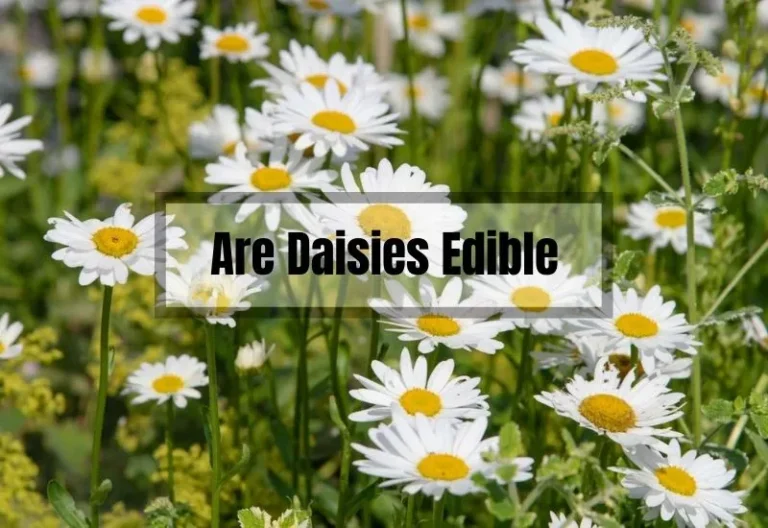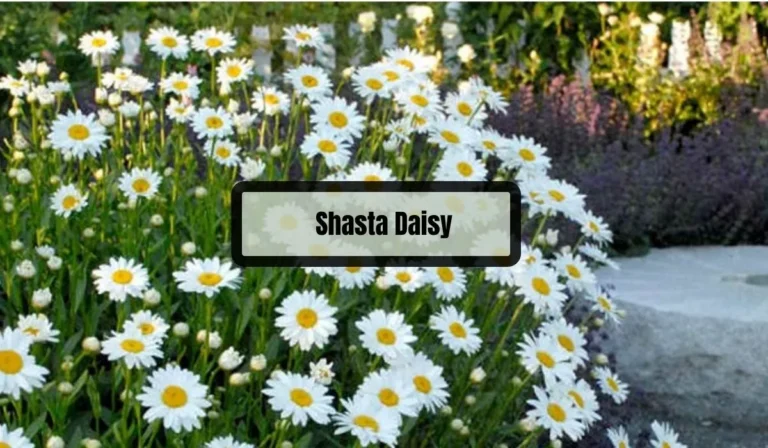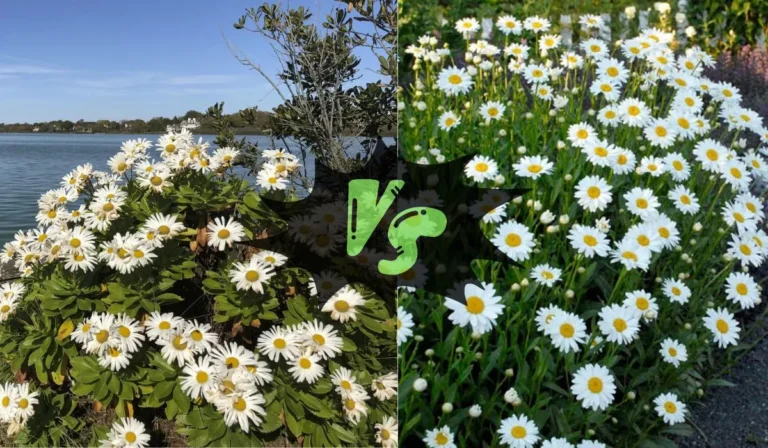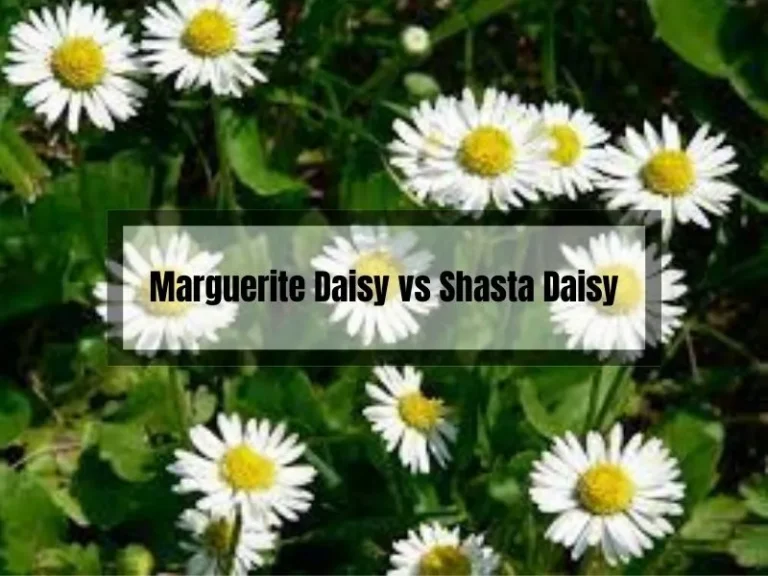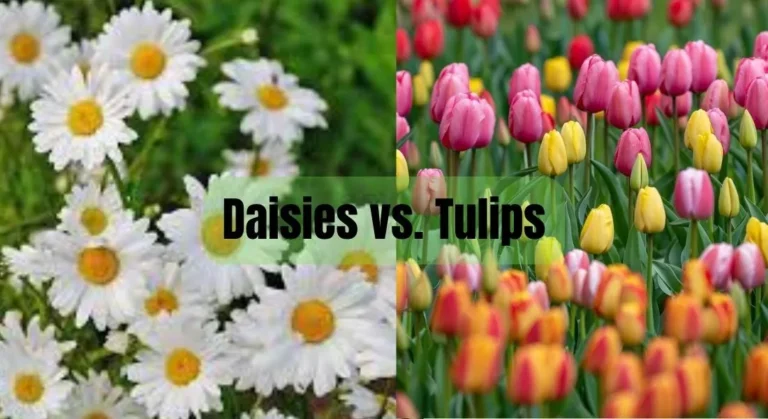Shasta Daisy vs Oxeye Daisy: Which One Should You Choose?
If you’re looking to add daisies to your garden, you might be considering the differences between Shasta daisies and oxeye daisies. Shasta daisies are a hybrid plant developed in the 1800s, named after Mount Shasta’s snowy peaks, while oxeye daisies are native to Europe and Asia but are now naturalized in North America.
Shasta daisies have white or yellow centers with long, white petals, growing up to 3 feet tall and blooming from early summer to fall, while oxeye daisies feature yellow centers with white petals, reaching heights of up to 2 feet and blooming from mid-summer to fall.
In this article, we’ll provide a comprehensive comparison of Shasta daisies and oxeye daisies, covering their origins, growing conditions, maintenance, and more, helping you make an informed choice for your garden.
Key Takeaways
- Shasta daisies are a hybrid plant developed in the 1800s by crossing the oxeye daisy with several wild daisy varieties, while the oxeye daisy is a native plant in Europe and Asia but is now naturalized in North America.
- Shasta daisies prefer well-drained soil and full sun, while oxeye daisies can grow in a wide range of soil types and pH levels, but they prefer well-drained soil and full sun.
- Both these daisies are relatively low maintenance, but you need to deadhead them regularly to promote continuous blooming.
Understanding Shasta Daisy
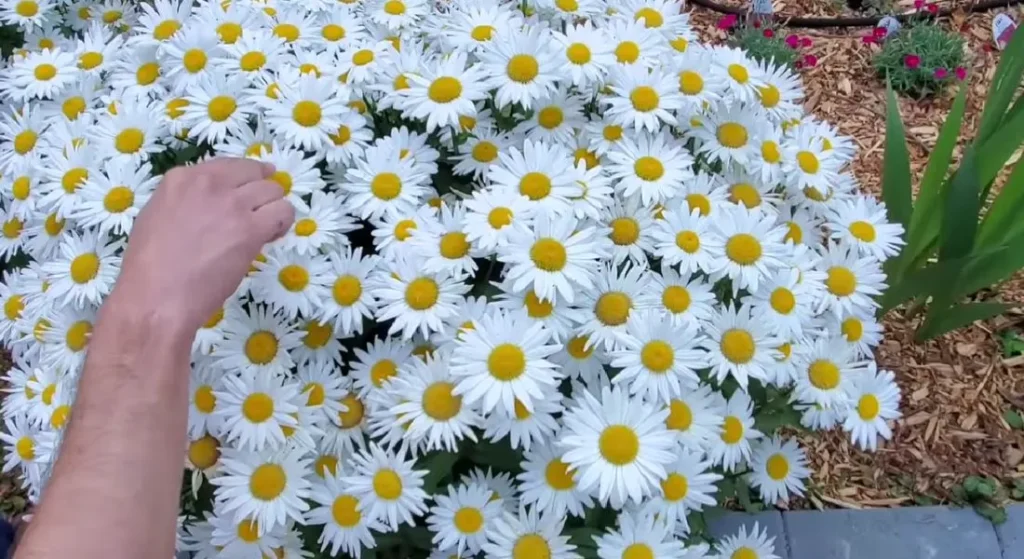
Shasta Daisy is a hybrid plant developed in the 1800s by crossing the oxeye daisy with several wild daisy varieties.
The plant is named after the snowy peaks of Mount Shasta in California. Today, there are 69 unique cultivars of the Shasta Daisy, according to the Royal Horticulture Society.
Features and Characteristics
Shasta Daisies are known for their large, white, daisy-like flowers with yellow centers. They have toothed, lance-shaped leaves that grow in a basal rosette.
The plant typically grows to a height of 1-3 feet and spreads to a width of 1-2 feet. Shasta Daisies bloom from early summer to early fall and attract bees, butterflies, and other pollinators to your garden.
Here are some key features and characteristics of the Shasta Daisy:
- Flower color: White with yellow centers
- Flower size: 2-4 inches in diameter
- Leaf shape: Lance-shaped with toothed edges
- Plant height: 1-3 feet
- **Plant spread: **1-2 feet
- Bloom time: Early summer to early fall
Growing Conditions and Care
Shasta Daisies are easy to grow and require minimal care. They prefer full sun and well-draining soil. Here are some tips for growing and caring for your Shasta Daisy:
- Plant in full sun: Shasta Daisies need at least 6 hours of direct sunlight each day to thrive.
- Water regularly: Water your Shasta Daisy regularly to keep the soil moist but not waterlogged. Avoid getting water on the leaves, as this can lead to fungal diseases.
- Fertilize occasionally: Shasta Daisies don’t require much fertilizer, but you can give them a boost with a balanced, slow-release fertilizer in the spring.
- Deadhead spent blooms: To encourage more blooms, remove spent flowers as soon as they start to fade.
- Divide every few years: Shasta Daisies can become overcrowded over time, so divide them every few years to keep them healthy and blooming.
Understanding Oxeye Daisy
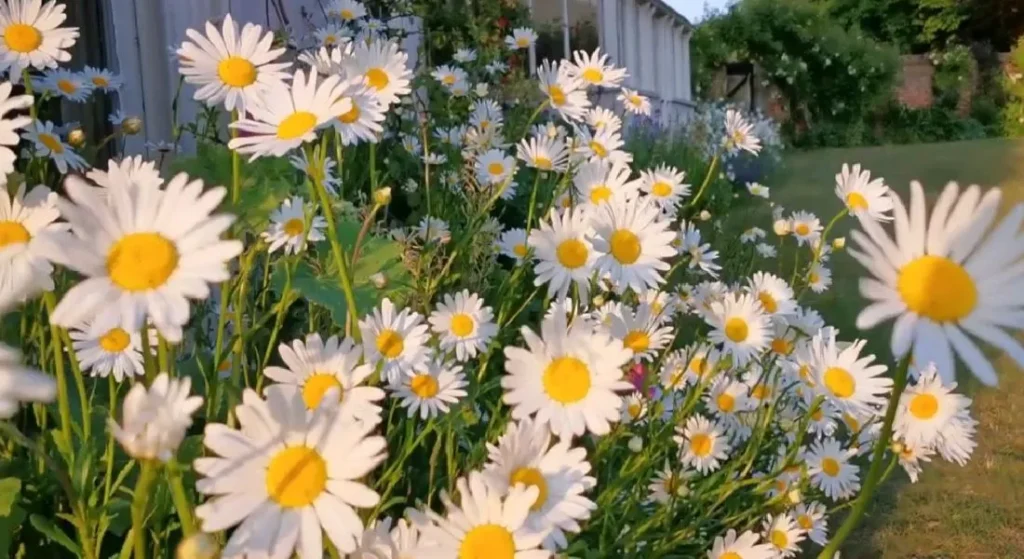
If you’re looking for a beautiful and low-maintenance plant to add to your garden, Oxeye Daisy is a great choice.
In this section, we’ll take a closer look at the origin and history, features and characteristics, and growing conditions and care of this lovely wildflower.
Origin and History
Oxeye Daisy, also known as Leucanthemum vulgare, is a wildflower native to Europe and Asia. It was introduced to North America in the 1800s as an ornamental plant and has since become naturalized in many parts of the continent.
Today, it can be found growing in fields, meadows, and along roadsides throughout much of the United States and Canada.
Features and Characteristics
Oxeye Daisy is a perennial plant that can grow up to three feet tall. It has bright white petals surrounding a yellow center, and its leaves are deeply lobed and toothed.
Unlike some other daisy species, it does not have ray flowers – the petals are all the same size. It blooms from late spring through early fall, and its flowers are popular with bees, butterflies, and other pollinators.
Growing Conditions and Care
One of the great things about Oxeye Daisy is that it is very easy to grow and care for. It can thrive in a variety of soil types and pH levels, although it does prefer well-drained soil.
It also prefers full sun, although it can tolerate some shade. The plant is drought-tolerant, so it doesn’t need a lot of watering once it’s established.
If you want to grow Oxeye Daisies in your garden, you can start by planting seeds in the spring or fall. You can also propagate the plant by dividing the root ball in the spring or fall. Once your Oxeye Daisies are established, you can deadhead them regularly to promote continuous blooming.
Related Posts:
Propagation and Planting
Shasta Daisy
To propagate Shasta daisies, you can use seeds, division, or stem cuttings. Seeds can be started indoors 6 to 8 weeks before the last expected frost or sown directly outdoors in the spring or fall.
Mature plants can be divided in the spring or fall to produce new plants. Stem cuttings can be taken in late spring or early summer for rooting and transplanting. When planting Shasta daisies, space them 12 to 24 inches apart to allow for proper air circulation and to prevent overcrowding.
Oxeye Daisy
Oxeye daisies can also be propagated by seed, division, or stem cuttings. Seeds can be sown directly outdoors in the spring or fall, or started indoors 4 to 6 weeks before the last frost.
Mature plants can be divided in the spring or fall to create new plants. Stem cuttings can be taken during the growing season and rooted in a well-draining medium. When planting Oxeye daisies, space them 12 to 18 inches apart to provide adequate space for growth.
Pests and Diseases
Like many garden plants, both Shasta and Oxeye daisies are vulnerable to pests and diseases. Common pests that may attack these plants include aphids, slugs, snails, and spider mites. Meanwhile, diseases such as powdery mildew, rust, and leaf spot can cause damage to the foliage.
To prevent these issues, it is important to maintain good air circulation around your plants and keep the foliage dry by watering at the base. Remove any infected leaves or plant debris promptly. In severe cases, organic or chemical controls may be necessary.
Garden Design and Landscape Use
Shasta Daisy
Shasta daisies are versatile plants that can be used in various garden styles. They make great focal points, especially when massed together for a stunning display.
You can also intermingle them with other flowering plants to create a more casual, mixed look. Shasta daisies pair well with plants like echinacea, rudbeckia, lavender, and ornamental grasses, which have contrasting textures and colors.
Oxeye Daisy
Oxeye daisies are perfect for meadow-style and informal garden designs. Their natural, wildflower-like appearance can be appreciated when combined with other native or naturalized plants such as wild lupine, yarrow, and butterfly weed to create a low-maintenance, pollinator-friendly garden.
You can also use oxeye daisies in borders or as filler plants, adding a delicate, airy touch to your garden design.
Environmental Impact
The Oxeye daisy is considered an invasive species in some regions due to its ability to spread rapidly and outcompete native plants. As a result, it may be restricted or discouraged in some areas.
To minimize the risk of spreading, deadhead the flowers before they go to seed, and avoid planting Oxeye daisies near natural habitats or protected areas.
Comparative Analysis
Appearance
When it comes to appearance, Shasta daisies are larger and more showy than Oxeye daisies. Shasta daisies have a yellow center surrounded by white petals that radiate outwards.
The petals of Shasta daisies are usually wider and more numerous than those of Oxeye daisies. Shasta daisies can grow up to three feet tall, making them an excellent choice for the back of a border or as a focal point in a garden bed.
Oxeye daisies, on the other hand, have smaller flowers with fewer petals. They have a yellow center surrounded by white petals with a yellow or greenish tint.
The petals of Oxeye daisies are usually narrower and more pointed than those of Shasta daisies. Oxeye daisies grow up to two feet tall and are ideal for planting in large groups or as a ground cover.
Growth and Maintenance
Both Shasta and Oxeye daisies are easy to grow and maintain. They are both hardy perennials that can tolerate a wide range of soil types and pH levels. However, there are some differences in their growth and maintenance requirements.
Shasta daisies prefer well-drained soil and full sun. They require regular deadheading to promote continuous blooming. Shasta daisies can be divided every two to three years to keep them healthy and vigorous.
Oxeye daisies can grow in a wide range of soil types and pH levels, but they prefer well-drained soil and full sun. They do not require deadheading, but they can become invasive if not controlled. Oxeye daisies should be divided every three to four years to prevent overcrowding.
Environmental Impact
Both Shasta and Oxeye daisies have some environmental impact. Shasta daisies are not invasive and do not pose a threat to native plants. They are attractive to bees and butterflies, making them a valuable addition to any garden.
Oxeye daisies, on the other hand, can become invasive and outcompete native plants. They can also reduce biodiversity and alter ecosystems. Oxeye daisies should be planted with caution and controlled to prevent their spread.
Frequently Asked Questions (FAQs)
If you’re considering adding daisies to your garden, you may be wondering about the differences between Shasta Daisy and Oxeye Daisy, and which one is easier to grow. Here are some frequently asked questions to help you make an informed decision.
What is the difference between Shasta Daisy and Oxeye Daisy?
Shasta daisies are hybrid plants that feature large, robust blooms and a bushy growth habit. They typically grow between 2 to 3 feet tall, with flowers 2 to 5 inches in diameter.
On the other hand, Oxeye daisies are native to Europe and Asia and are smaller, growing 1 to 2 feet tall, with flowers 1 to 2 inches in diameter. Oxeye daisies have more delicate and sparse foliage compared to Shasta daisies.
Which is easier to grow, Shasta Daisy or Oxeye Daisy?
Oxeye daisies are generally easier to grow, as they are more adaptable to various soil types and can tolerate a wider pH range. They are also more drought-tolerant than Shasta daisies, making them suitable for xeriscaping.
What is the ideal climate for growing Shasta Daisy and Oxeye Daisy?
Shasta daisies are hardy in USDA zones 5 through 9, while Oxeye daisies are hardy in USDA zones 3 through 9. Both plants prefer full sun but can tolerate light shade.
Can Shasta Daisy and Oxeye Daisy grow together?
Yes, Shasta and Oxeye daisies can grow together, as they have similar growing requirements. However, they may differ in size and appearance, so consider this when planning your garden design.
Are Shasta Daisy and Oxeye Daisy toxic to pets?
Shasta daisies are generally considered non-toxic to pets, while Oxeye daisies can be toxic to some animals, particularly grazing animals like cattle and horses.
Ingesting large quantities of Oxeye daisies may cause digestive issues in pets. Always supervise your pets around plants, and consult a veterinarian if you suspect your pet has ingested any part of a potentially toxic plant.
Conclusion
In the end, choosing between Shasta and Oxeye daisies comes down to personal preference. Shasta daisies offer large, showy blooms with a yellow center and white petals, while Oxeye daisies have delicate, small flowers with a yellow center and white petals.
Both varieties can thrive in a variety of soil types and pH levels, making them versatile additions to any garden. Ultimately, the choice is yours and whichever you choose, they are sure to bring beauty and joy to your landscape.

